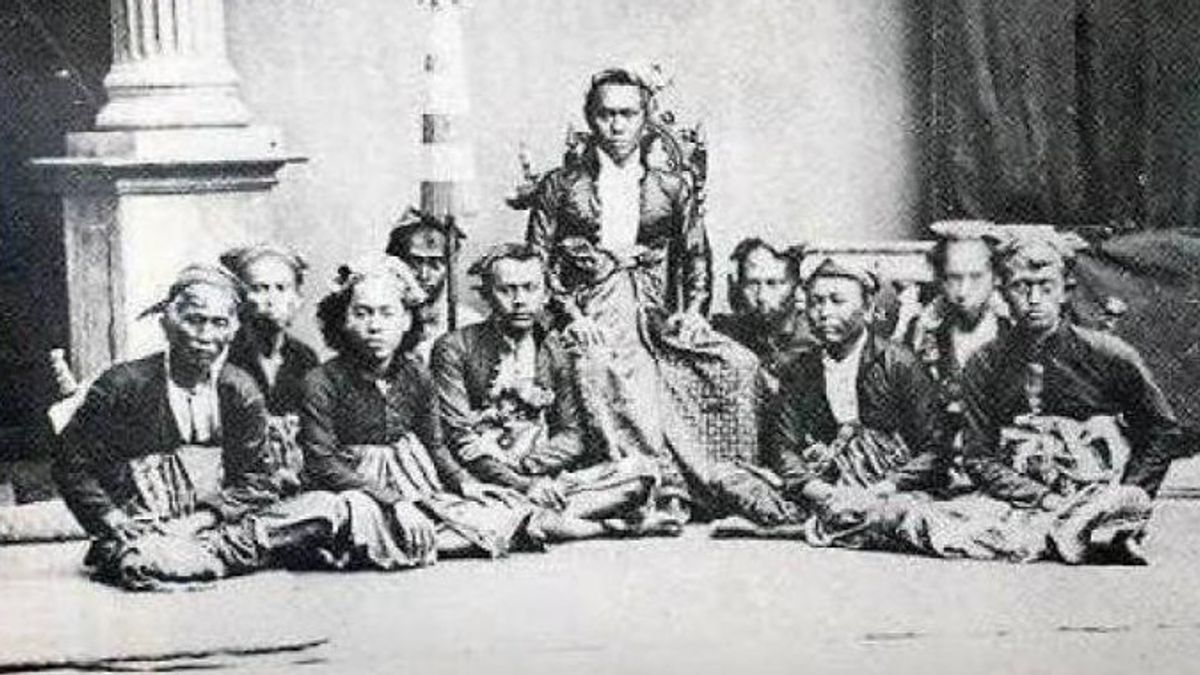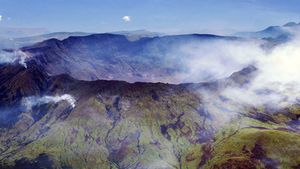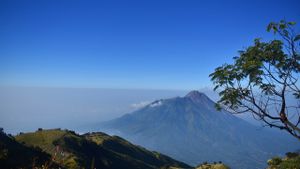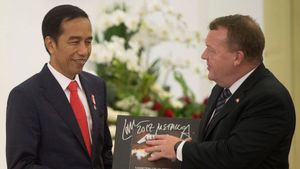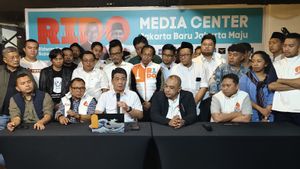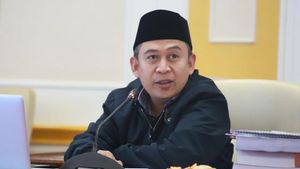JAKARTA - The Buleleng Kingdom is a Hindu-style kingdom located in northern Bali, precisely in Singaraja. The history of the Buleleng Kingdom began in the mid-17th century AD and ended in 1849 because it fell to the Dutch.
The Buleleng Kingdom was founded by I Gusti Anglurah Panji Sakti from Wangsa Kepakisan. Deni Prasetyo in a book entitled Knowing Prosperous Kingdoms (2009) said I Gusti Anglurah Panji Sakti was the son of I Gusti Ngurah Jelantik who at a young age was named I Gusti Gede Pasekan.
His father was the ruler of the Gelgel Kingdom who had been at the throne since 1580 AD.
Although he is the son of the king and has the status of a prince, I Gusti Anglurah Panji Sakti is not the crown prince, because he is the son of the widow of I Gusti Ngurah Jelantik named Sri Luh Pasek Gobleg.
As a child, Gede Pasekan was different from other children. He has privileges, including being said to have supernatural powers.
This made the father of I Gusti Ngurah Jelantik worried. He was worried that one day his daughter of his daughter-in-law would shift the position of heir to the throne he had appointed, namely the crown prince of the empress.
Therefore, when Pani Sakti was 12 years old, he was exiled to his mother's hometown, namely Panji Village, Den Bukit Region, northern Bali.
In his exile, Panji grew up to be a brilliant young leader. He managed to unite the areas around Den Bukit and was even later crowned king.
I Gusti Anglurah Panji Sakti built her own kingdom in 1660 which was later named the Buleleng Kingdom.
Please note, the Buleleng Kingdom stands when the existence of the Majapahit Palace is fading. Majapahit, which is centered in eastern Java, is known as a great abundance and has been in power for centuries. However, the kingdom collapsed due to a struggle for power after Hayam Wuruk in 1389 AD.
In addition, the emergence of Islamic power in Demak in the 15th century AD was also the cause of the collapse of the existence of Majapahit, as written by historian Slamet Mulyana in the book The Collapse of the Hindu-Java Kingdom and the emergence of Islamic Countries in the Archipelago (2005).
On the east of Java Island, Buleleng was accompanied by a number of other Hindu kingdoms in Bali. Amurwani Dwi and his friends in Indonesian History (2014), said that on the Island of the Gods at that time there were several kingdoms, such as Gelgel, Klungkung, Buleleng, and so on.
During the reign of I Gusti Anglurah Panji, the Buleleng Kingdom developed rapidly and immediately achieved glory in its early days.
The Buleleng Kingdom has a busy trading dealer because it is located close to Buleleng beach. This trading airport acts as a distributor of produce from Balinese traders to other areas.
Quoting the book I Gusti Anglurah Panji Sakti Raja Buleleng (1994) by Soegianto Sastrodiwiryo, the territory of the Buleleng Kingdom is growing even more after conquering Blambangan (Banyuwangi) and Pasuruan in eastern Java.
The existence of the Buleleng Kingdom slowly began to fade after I Gusti Ngurah Panji Sakti died in 1704. In 1732, Buleleng was conquered by the Kingdom of Mengwi. Twenty years later, to be precise in 1752, Buleleng again became an independent country.
However, again Buleleng led by I Gusti Ngurah Jelantik (1757-1780) lost the war. He was defeated by the leader of Wangsa Karangasem, I Gusti Pahang Canang. Thus, the Kingdom of Buleleng under the leadership of Wangsa Karangasem.
Under the leadership of Wangsa Karangasem, the family of the Buleleng palace was given an important position. One of them is I Gusti Ketut Jelantik, the son of I Gusti Ngurah Jelantik.
When I Gusti Made Karangasem became the leader of Wangsa Karangasem in 1825-1849, I Gusti Ketut Jelantik was appointed as a regent or warlord.
In 1846-1849, the Buleleng area was invaded by the Dutch. Based on Robert Pringle's records in the A Short History of Bali (2014), I Gusti Ketut Jelantik became a leader to fight the invaders.
I Gusti ketut Jelantik died in a war that ended in a Puputan alias an all-out war in 1849. Since then, the northern part of Bali, including Karangasem and Buleleng, has been controlled by the Dutch.
According to Sugeng Riyanto and his friends in the Study of Potential Historical Landscape for Historical Tourism Developers in Singaraja City published in the 2016 Archipelago Architecture journal, there are a number of relics of the history of the Buleleng Kingdom, including:
The Great Crossroad (Catus Patha) is located at the intersection of Jalan Mayor Metra, I. Veterans, and Jalan Gajah Mada.
Catus Patha is a traditional spatial layout concept about the crossroads that become the center of urban growth in Bali. The division of space at the great intersection consists of pretending to be places of worship, purifiers as centers of government, markets as economic and field centers as open spaces.
Catus Patha Singaraja City has existed since the time of the Buleleng Kingdom. This area was at the center of economic activity and government during the Buleleng administration.
The legacy of the Buleleng Kingdom is on Hasanudin Street. The Ancient Mosque was the first Muslim place of worship in Singaraja City and was classified as the oldest mosque on the island of Bali.
In the past, this mosque was abandoned and covered by shrubs around the Buleleng River.
This mosque was first discovered by the Bugis Bajo people when cleaning the bush on the banks of the Buleleng River.
The existence of the Keramat Mosque is associated with the entry of Islamic teachings in Bali brought by santri or walisongo students during the Buleleng Kingdom government.
This is evidenced by the shape and architecture of mosque buildings that are similar to mosque buildings in the demak area.
The Jami Grand Mosque is a place of worship for Muslims built during the reign of the Buleleng Kingdom.
This directional building is located on Jalan Imam Bonjol and is included in the administration of Bugis Village.
The Jami Grand Mosque was built as a form of tolerance between religious communities when the Buleleng Kingdom government took place.
The mosque was originally named Masid Jami, which means a mosque that can be used together, because its use includes several villages around it.
In the late 1970s, puryo relatives and Muslim leaders changed Masid Jami's name to the Jami Grand Mosque in memory of the good service of King Buleleng at that time.
Being on Jalan Patimura, Bugis Village is a residential area for the Bugis Tribe community. This area was formed when the Bugis community settled in Singaraja City in the 17th century.
The existence of the Bugis Tribe in Singaraja City is as a marine fleet for the Buleleng Kingdom.
The Buleleng Regent's Office is on Jalan Pahlawan. This building used to be the office of the Assistant Resident during the reign of the Dutch East Indies in Bali.
This building was founded in 1849 AD after the official colonialists took control of the city of Singaraja. After Indonesia Merdeka, this building was used as a Veterans Building and Higher Education.
The port, which is located on Jalan Erlangga, was once the Buleleng Port area and the only historical landscape that has been developed into a tourist attraction in Singaraja City.
During the reign of the Buleleng Kingdom, this port was a residential area for the Bugis people.
During the reign of the Dutch East Indies, the former Buleleng Port was Bali's main gateway, especially for the distribution of goods.
Meanwhile, during the independence period, this area was a battleground between the people of Buleleng and the Indonesian National Army against Dutch troops (Cultural and Tourism Office of Singaraja City, 2013).
VOIR éGALEMENT:
The following is a list of King Buleleng from Wangsa Panji Sakti:
- Gusti Anglurah Panji Sakti
- Gusti Panji Gede Danudastra
- Gusti Alit Panji
- Gusti Ngurah Panji
- Gusti Ngurah Jelantik
- Gusti Made Singaraja
Meanwhile, the list of King Buleleng from Wangsa Karangasem, among others:
- Great Rai's son
- Gusti Gede Karang
- Gusti Gede Ngurah Pahang
- Gusti Made Oka Sori
- Gusti Ngurah Made Karangasem
The English, Chinese, Japanese, Arabic, and French versions are automatically generated by the AI. So there may still be inaccuracies in translating, please always see Indonesian as our main language. (system supported by DigitalSiber.id)
